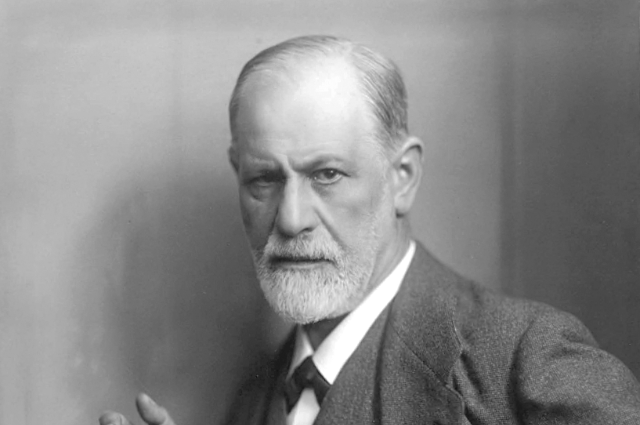A famous author quoted,
“If properly speaking the truth, our unconscious is the real psychic”.
This well-known statement was the basic purpose of attention for Sigmund Freud that led him to his work which is widely and almost globally well-known to date. He was an Austrian neurologist. Several years ancient, his pioneering studies into the subconscious mind of an individual started. To begin with, the most prominent theory ever proposed by him was the psychoanalytic/psychodynamic theory.
Importance of this theory:
The psychoanalytic theory helped people evolve within their inner selves. The basic explanation involved gaining a better understanding and awareness about oneself and one’s own needs, desires, and dreams. When there is a clear mind, people tend to have better and healthier relationships, improved self-esteem, and positive emotions. The ability to make better life decisions and decisions for yourself improves.
This theory is very prominent in the history of psychology as a subject. It helped in emerging steadiness into the lives of individuals especially, women. The therapy created a strong level of trust and security among people. The self-criticism led to positive self-love and the egoistic personalities changed to clear and aware people.
The Aspects:
This theory focuses on three major aspects namely — the id, Ego, and Superego. These three dimensions helped us understand the dynamic interaction of the human personality. He elaborated on these elements in order to give a detailed view of how our mind tends to work along with our physical actions and how the perspective can affect and change the personality of a human in a very distinct way.
The Id, to begin with, contains all the basic, childish, and primal urges that an individual can possess. This primitive part of our mind wants instant gratification and the fulfillment of basic needs such as hunger, thirst, and sex. It creates conflict and works on the pleasure principle. For example - a child having the ice cream even when the parents refuse will create a conflict because the child acted upon his irrational need without thinking logically.
Superego inculcates more of what is called social values and norms. It works on the moral principle. In this context, there is an ethical restriction of behavior that does not allow the individual to cross boundaries. It fits a human into the social era and she/he learns to adapt to and learn the cultural, social, and moral values of a society/community. The superego assists humans to differentiate between right and wrong. For example — the child will not have the ice cream once the parents have refused because his superego will indicate to him a direction explaining that this is wrong.
Ego works on the reality principle. It keeps a check and a balance between your Id and Superego. Working on reality focuses more on the proper reasoning and demands in the context of real life and environmental situations. For example - the child having ice cream after asking parents one more time will lead to a balance and there will be no difference of opinion between both the parties.
The Techniques:
A very interesting approach was further followed by him that contributed a set of theories, principles, therapeutic techniques and literally speaking, some of his past experiences too. This approach was/is famously known as Psychoanalysis. It was the most ideal mode of disciplined technique that Freud established in the late 80s and used with his clients in detail. Psychoanalysis focuses on deciphering and interpreting how our unconscious mind governs our present conscious actions. It helps people gain a better understanding and self-awareness. Under psychoanalysis, there exist two mediums, dream analysis, and free association.
Dream analysis is majorly mastered in the dreams of a person. According to Freud, dreams are described as the ‘royal road’ to the unconscious and certainly to gain understanding. He believed that people should be maintaining a dream diary and must narrate the elements and components of their dreams in it.
What surprises most people is the fact that dreams are a visual content representation of our own conflicts, deepest desires, and unfulfillments. Freud used this technique to help his clients understand better what was going on and how they should proceed with it.
He used a method namely – free association (free association symbolizes ‘freely speaking your heart out’ where individuals are free to share their emotions, thoughts, and words in any manner and form. They need not be coherent) where the clients were free to put down their dreams, visuals and thoughts on a paper so that it could be better understood and interpreted.
Conclusion:
Earlier, great people like Aristotle and Babylonians, and Egyptians used to believe that dreams were a sign of some heavenly prophecy and meant that the God almighty wanted us to be aware of something that should be done immediately and with his permission, until, the 1900s where Freud published his book Interpretation of dreams and made the world aware with this context and newly invented creativity.
He believed that the unconscious mind was one of the fundamental and foundational concepts in this wide subject matter. His approach made dreams a key to rationalize ones current life situation and ongoing thoughts. Freud also believed that personality formation is always a conflict between our biological drives that thrive for fulfillment and the need to control such impulses. There is a constant friction happening between what the heart desires and what the mind feels is right. Sometimes, there are unfavorable consequences that might impact the personality either in a harsh way or the best possible manner.

